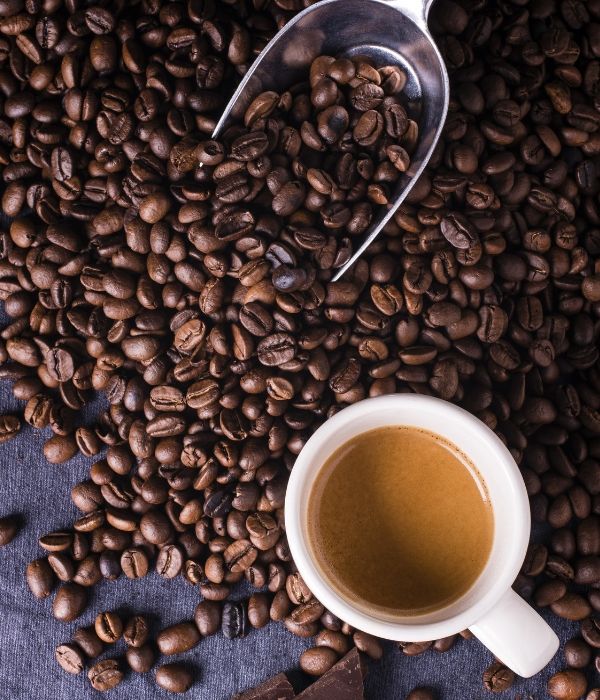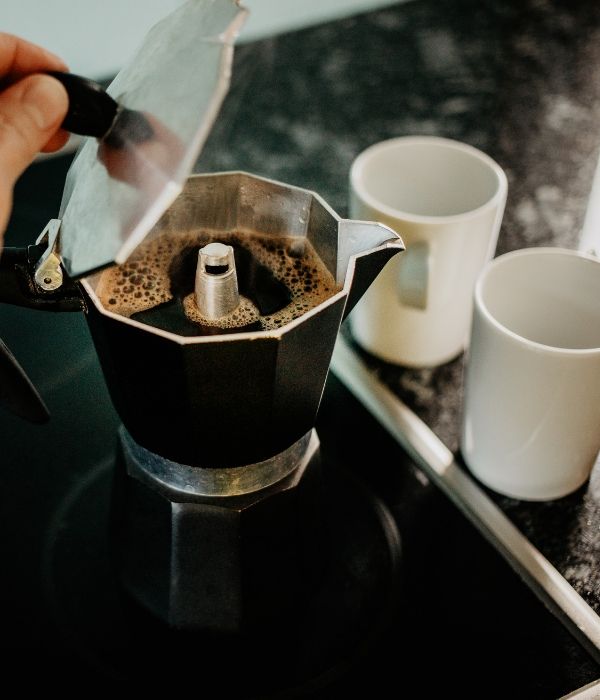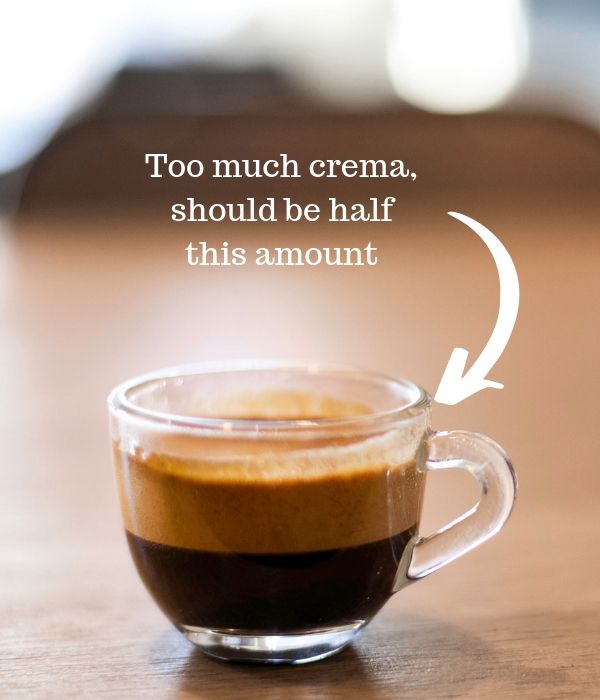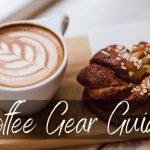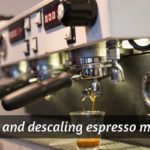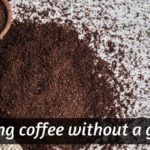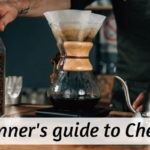When making espresso, you're actually making a fairly complicated drink. In that, it requires skill, patience, and a keen eye. And lots of practice.
No home barista was ever born with all the knowledge, so this is for everyone who'd like to learn how to make a nice espresso shot, from scratch.
As such, some of this info will be basic, some will be very specific. But it'll all combine to help you pull a truly satisfying espresso shot.
Grab something to take notes with, and sit down a bit, since this will be a longer read.
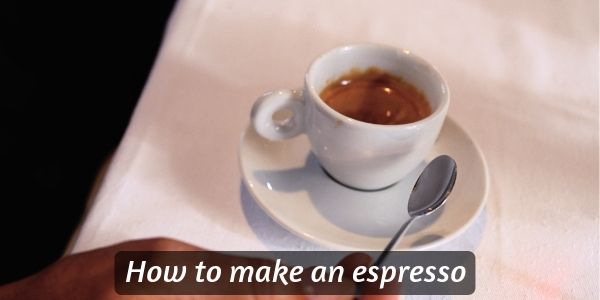
Table of Contents
What makes a good espresso shot ?
A good shot of espresso is actually hard to pin down, since flavor-wise we all have our preferences.
Texture-wise, a good shot of espresso should be on the thicker side, with a nice layer of crema (about half an inch) on top. That's the light brown/cream colored layer that sits on top of the actual brew.
In the drink there should be a bit of extracted coffee oils, aside from the crema.
And it should be fairly dense, since this is a short and stocky brew. It's basically coffee concentrate.
In terms of flavor, an espresso shot will be able to pick up on almost all the notes in your particular coffee beans. The best flavor can be detected about half a minutes after the shot was pulled.
This is because the body can be fooled by temperature variations, which may mask or highlight certain flavors. As such, the best tasting espresso shot is not piping hot.
Leaving it to cool for too long isn't recommended either, since the flavor may disappear altogether.
So in short, a good espresso:
- is thick, dense, layered and has a definite mouthfeel
- has a nice layer of crema on top, about half an inch thick (too much can be a sign of too much Robusta)
- is pulled in about 25-30 seconds
- has plenty of flavor and packs quite a punch
You'll find all kinds of espresso shots, some better and some worse. In your journey as a home barista, you'll learn how to pull a shot exactly the way you like it, starting from the baseline.
I think it's necessary we clear up some things.
What is espresso coffee ?
Espresso is a method of brewing coffee, that's meant to bring the most flavor out of coffee beans in the shortest amount of time possible. Hence the Italian ''espresso'', meaning express, fast, quick.
This is because through some very finely ground coffee beans, hot water is pushed through at a fast rate. The speed, combined with the heat of the water, processes the coffee at such a fast rate that it's done in a few seconds.
Which also forms the cream layer, since the hot water is pulling out the fats from the coffee grounds and aerating them.
And that's it. That's an espresso.
Before we go on though, let's cover the types of espresso shots, since this will come up several times.
Types of espresso shots
As you read this article and figure out how to make espresso at home, you'll find 'espresso' mentioned fairly often. This is referring to the standard espresso shot, unless I mention that it's a different shot.
Standard espresso
The most common espresso, the one usually used in various coffee drinks - like these 12 basic ones - and what you'll find is the standard.
Use about 7 gr of ground coffee, per each shot. The final brew should be a 33 ml/1 oz shot of coffee, crema included.
Now, sometimes the density is higher and you'll get less that 1 oz by volume but it will be 1 oz by weight.
Other times you'll get a very thin espresso and might be fooled if you just look at the shot.
Your standard shot of espresso should be done in about 25-30 seconds, assuming your machine is already well heated.
Ristretto
This is half a shot of espresso, in that the amount of ground coffee is the same as a standard - 7 grams.
But the water content is cut in half, which also means that the time is halved as well.
This results in a 15 ml/0.5 oz of espresso (crema included), which is going to taste even stronger than a standard shot of espresso.
But, it can be very unbalanced, since some notes might be muted.
Espresso lungo
Pretty much the opposite of a ristretto. A long shot is made using the same 7 grams of ground coffee, but allowing the water to run for much longer.
Actually it runs for almost a minute, which results in about 60 ml/2 oz of espresso.
This one will be a thinner brew, with a less impressive crema, and may be duller in taste.
Double/triple espresso
The double and triple are standard shots, in terms of brew time and water content.
But the ground coffee used is double or triple.
This results in 14 and 21 gram coffee, per 33 ml/1 oz of brewed coffee.
In a way, it's kind of like a larger ristretto, since the proportions are similar.
However, you can always fiddle with the amount of time you let the water run, since it's something that's going to affect the espresso's taste. And ultimately, that's up to you.
Now that we've got that covered, let's talk about the equipment. There are some things you'll definitely need in order to brew a good shot of espresso at home. Or anywhere, really, since the principle is the same.
What you'll need to pull a great espresso shot
Alright, now we know what espresso is, what kinds of espresso there are, and how we can get to what you'll need.
Now, the equipment is only half the trick.
A good equipment set will run you a few hundred bucks, so you'll want to be picky about what you get, and how much you're willing to compromise on the quality of the espresso.
Or, make up for it by improving your skill.
1. Great coffee, mostly Arabica but with a hint of Robusta
This is one of the most important things to consider.
A good coffee blend will save you a lot of trouble when brewing, because it will brew beautifully.
But what kind of coffee should you look for ?
Most would go with Arabica, but I say give Robusta credit where it's due.
While Arabica has more flavor and complexity, Robusta has the punch and caffeine. And provides more body and 'oomph' to the drink. So a blend between the two is best.
Go easy on the Robusta, as it can make your coffee too bitter. And too much of it can also produce an inordinate amount of crema, that won't be tasty or even nice to look at.
So I'd say a 70/30 Arabica to Robusta content blend would be great.
If you want to brew single origin coffee, go ahead. Just know that Arabica produces less crema, and has less caffeine, so expect that from your espresso.
2. A reliable grinder that can get you the finest grind
Buy your coffee freshly roasted, but not already ground.
If you want to be really method about it, you can even roast the beans at home - a guide on roasting levels will help a lot.
But most companies roast their to the right level.
It's the grinding you have to be careful with. Pre-ground coffee loses its flavor after a while, especially if it's been opened a few weeks.
So, what I recommend is that you grind your coffee on the spot, right before you brew your coffee.
For this you need a good coffee grinder, either burr or blade.
Both will give you a great fine grind, but in general burr grinders are more reliable and longer-lived.
And you'll need to finest possible grind, otherwise your espresso won't brew as well. It will end up under extracted is you use a coarser grind, and yield a thin drink to begin with.
So, a good burr grinder. If you're looking for a recommendation, this one from OXO fits the bill well enough.
It can take a lot of coffee beans in one go, and give back exactly the same amount you put in (no weird clumps stuck inside the grinder).
Sure, it's a heavier machine and it might be a little noisy, but then again that's grinders for you.
Fifteen settings on this burr grinder will allow you to pick out whichever size you like, and get consistent results for years on end.
You can check the listing on Amazon here, and read the reviews as well.
3. Espresso machine, reasonably priced but efficient
Finally, the espresso machine. this is one of the most important pieces of equipment you'll need.
There's manual espresso presses, and there's automated machines.
Honestly I recommend you use an automated one, since it will be easier to judge and measure your drink.
Manual presses resemble tea making, in that you're going to need a much keener eye and more personal approach in order to pull a great shot. It becomes more of a skill thing.
A good espresso machine will take a while to heat up. Could be 10 minutes, could he half an hour, could be more.
Now, of course the more expensive machines will have all kinds of fancy buttons and options to brew your coffee. They will also grind the coffee on the spot, eliminating the need for a grinder, which comes in handy.
So I recommend you go with a competent, reasonably priced espresso machine that's also going to let you customize enough about your coffee so that you feel in charge.
For example this Breville espresso machine is a monster of a machine, but it's going to get the job very well done.
It allows you to adjust pretty much anything you want about it, and comes with its own instructions kit.
And cleaning kit.
And very important, it does come with a tamper, which is going to make your life much easier when trying to figure out why a shot went wrong.
It's got an integrated grinder, a burr one at that. Meaning your coffee will be ground very consistently, all to the same size that you want.
Milk can be foamed with this machine, as its wand can do microfoaming as well.
It's a long term commitment, this espresso machine. But if you're a heavy coffee drinker and need several doses of caffeine a day, it could be just the thing for you.
You can check the listing on Amazon here, and read the reviews as well.
How to make espresso at home, with a machine
With an espresso machine, things become easier. The machine will do most of the work for you, heating the water and pulling it through the ground coffee. So let's begin.
Turn the machine on, let it heat up as much as it needs. It should be warm to the touch, on the outside.
Using a kitchen scale, measure out 7 grams of fine ground coffee. If you have no kitchen scale, you probably have one of those plastic measuring spoons your espresso machine came with.
Usually two of those spoons will do the trick.
Leave the coffee aside, and lock your empty (this is important) portafilter into the grouphead, and run a shot of espresso, with no coffee.
What this does is bring wot water to the forefront, and will heat up all the elements inside the machine. This way, your first espresso won't be in danger of underextraction because of low water temp.
So once this empty shot is pulled, wipe the filter and head clean, and add your ground coffee to the filter basket.
You're going to need to tamp it, which is going to press the coffee grinds into a coherent mass that will provide some resistance to the hot water.
Not tamping/pressing your ground coffee will lead to thin/watery espresso.
Most espresso machines' spoons have a flat side that can be used for tamping. If yours doesn't, you can use your fingers and try to get everything as even as possible.
Pack it well, and your espresso should come out great.
Once the filter is locked into the machine place your cup and push the relevant button. In most cases, it's a simple 'espresso' button, or has the crude drawing of a half-empty cup on it.
Your espresso should come out in the specified time. Most machines don't allow you to tinker with the water temperature or brewing time, but if yours does, make a few experiments with it and see which settings you like most.
How to make espresso at home, without a machine
What if you have no espresso machine ? Or wouldn't like to use a machine ?
The you've got the Moka pot. It's basically the precursor to the espresso machine, since it operates on the same principle, but at a much slower rate.
The way a Moka pot works, is that its 3 chambers are meant to encourage water to rise to the top through heat.
So in the bottom chamber, you add as much water as you need.
In the middle chamber, add ground coffee since that's where the filter is. Use slightly larger grinds, something like medium-fine.
The water will begin to bubble as it heats, and the pressure will push it up through a spigot, into the middle chamber, and again through another spigot into the upper chamber, where the brewed coffee will collect.
So how do you make Moka coffee ? As long as you have a working stove (or high heat source) then you're set.
I recommend you add already hot water to the lower chamber, thus reducing the brewing time.
So add hot water to the lower chamber, add ground coffee to the middle chamber, and screw them together.
Use a kitchen towel, it will burn.
Then, screw on the top chamber, which should be empty.
Set the whole thing on heat, and wait for it to make some gurgling sounds. That's the brewed coffee coming up through the top spigot, into the top chamber.
The key here is to not let the pot gurgle too long, not too little. Too little, and you'll have half-made coffee that won't taste as good if you set it back on the heat.
Unfortunately, this is something you'll learn to hear rather than time, so it's a trial an error thing.
What I can tell you though is that once the gurgling stops, you should definitely take the pot off the stove. There is no more water to come up.
There will be significantly less crema with this method, but it's the closest thing to an espresso you can get, without an espresso machine.
What can go wrong with your espresso, and how to fix it
Now, when making espresso things can and do go wrong. Troubleshooting is how we're going to learn best, so here's what you can do what your espresso shot is sub-par.
My espresso is too thin, or too dense
Trouble with coffee density has a lot to do with how easily the water will run through the ground coffee, and/or the type of coffee you use.
Robusta-heavy blends offer more body (density), and as such will give you a thicker espresso. Arabica-heavy blends will have a more balanced cup.
Pure Arabica will have a more water cup.
Letting the shot run for too long can result in a watery cup. If your machine as a predetermined time it runs water for, you will usually have an ESC button, or something similar to stop the process at any point.
So you're reducing the amount of water the machine gives you in this case. Conversely, you can opt for a lungo shot, and see if that suits you better.
As for the ground coffee, proper tamping is essential. It makes sure your coffee is all leveled, and the water won't travel through a specific path, instead reaching all the coffee.
So make sure your coffee is leveled when you lock the filter in.
And finally, when can happen is that you may need more or less than 7 gr of ground coffee per standard espresso shot. So try it out, see if 9 grams give you a better cup. Try 11. Try 5.
Keep playing around with all of these elements, so you can get the exact density you want.
My espresso has barely any crema
This is usually because of stale coffee. If you're using coffee that has been ground and left opened for some time (like a few weeks or days) then it will lose lots of aroma, through the form of escaping gas.
That gas, combined with the fats inside the coffee, is what will produce crema.
Low gas and low fat produce almost no crema.
Too much crema means your coffee needs to settle down for a couple of days, and this is especially true if you have a lot of Robusta in your blend.
Another possible answer for low crema yield is using pure Arabica beans. These do produce crema, but in a smaller amount. So depending on what you're used to or looking for, Arabica may or may not be too 'thin' for you.
My espresso is 'dead' and bitter
Another problem with espresso is that if you leave it for too long, like forget it in a corner for 10 minutes, it can get stale, cool down, and turn even a bit bitter.
This is mostly what 'dead' espresso is. The freshest is the best, but that's usually too hot.
Leaving your espresso (or any coffee) to sit too long means losing flavor, and the crema will start to break down.
This also happens when you let the shot run too long, and you end up overexracting your coffee. Or, when your water is too hot, in which case tinkering with that is necessary. You should aim for 93 C/200 F.
My espresso is sour, too acidic
The opposite of the previous point, this espresso is underextracted. Not all the notes have come out, and your coffee tastes off.
This can be very true for Robusta-heavy blends, so be careful.
It can also happen in old espresso machines that haven't been thoroughly cleaned for a while.
Every few months, the whole thing needs to be taken apart as much as possible, and wiped clean on the inside.
This is especially true if you have a built-in grinder. Rancid coffee oil can build up on the blades/burrs, and this will affect your espresso.
Final thoughts
Brewing espresso is not exactly easy, if you want to do it right. There's lots of elements you have to watch out for, like brew time, tamping, grind size, water temperature, and so on.
But, with lots of practice and even more patience, you'll learn just how to brew your perfect espresso. Remember no one was born a barista, and everyone needs years of training to get the perfect shot.
So, arm yourself with all the knowledge possible. I hope I helped you out in this respect.
If you want to know more about coffee or tea, feel free to check the related articles below. Who knows what else you might find ?


